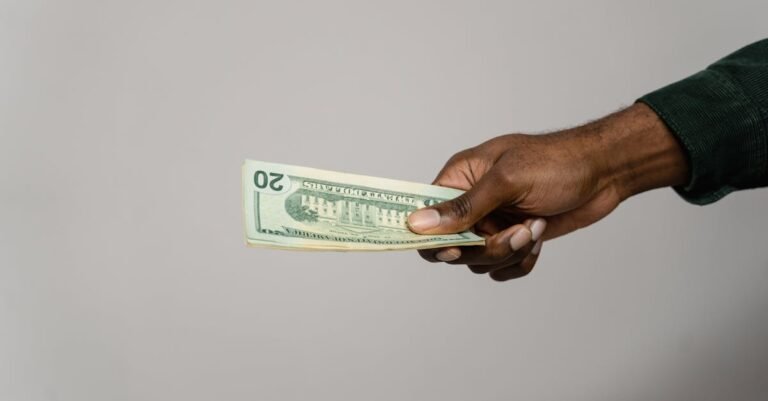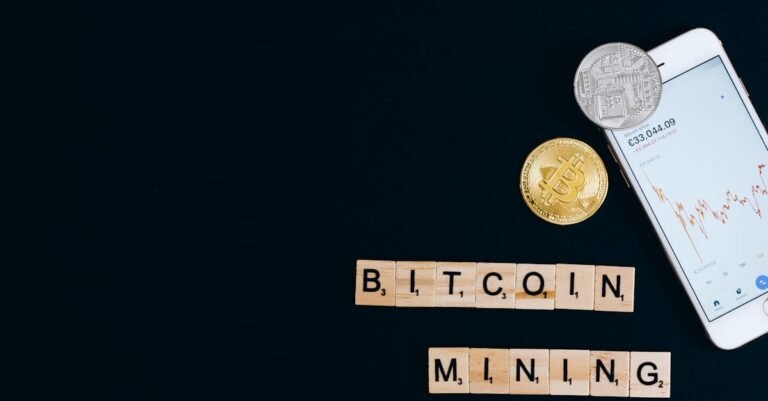Riding the Regulatory Waves: What’s Really Going On with Ripple and XRP?
Ever feel like the world of cryptocurrency is moving a million miles a minute? One minute things seem straightforward, the next, there’s talk of lawsuits, regulations, and words like “unregistered securities” flying around. It can be a lot to take in! One name that consistently pops up in these conversations is Ripple, and its associated digital asset, XRP. You’ve probably heard about them, maybe seen XRP mentioned on crypto price trackers, or perhaps caught wind of their big legal tussle in the United States. It’s a story filled with innovation, ambition, and a whole lot of regulatory hurdles.
Trying to understand the impact of all this regulation on Ripple and XRP can feel like trying to solve a complex puzzle. What does it mean for the company? What about the XRP token itself? And importantly, what could it mean for the future of digital payments and even the broader crypto space? It’s easy to get lost in the jargon and the headlines. But stick with me for a bit. Think of this as a friendly chat where we break down this complicated topic into bite sized, easy to understand pieces. We’ll explore what Ripple and XRP are actually trying to achieve, dive into the major regulatory challenges they face (especially that headline grabbing lawsuit!), and look at how things are shaping up around the globe. Forget the confusing technical manuals and dense legal documents; let’s unpack this together, focusing on what truly matters.
Understanding Ripple, XRP, and the Regulatory Cloud
Before we can really talk about the impact of regulation, we need to get on the same page about who and what we’re discussing. It sounds simple, but the distinction between Ripple the company and XRP the digital asset is super important, and it’s often where confusion starts. They are related, yes, but not exactly the same thing. Think of it like Google (the company) and Android (the operating system) – connected, but distinct entities serving different, albeit related, purposes. Understanding this difference is the first key to unlocking the regulatory puzzle surrounding them.
Then there’s the big shadow looming over them, particularly in the US: the regulatory uncertainty, headlined by the lawsuit brought by the U.S. Securities and Exchange Commission (SEC). This isn’t just some minor disagreement; it’s a fundamental clash over definitions and rules that could have far reaching consequences, not just for Ripple and XRP, but potentially for many other digital assets too. Let’s peel back the layers on both the technology and the legal battle.
What Exactly is Ripple and XRP? Let’s Break It Down
Okay, let’s start with Ripple. Ripple Labs Inc. is a private financial technology company. Think of them as innovators trying to shake up the old ways of doing things in banking, specifically when it comes to sending money across borders. If you’ve ever tried to send money internationally, you know it can be slow, expensive, and sometimes unpredictable. You might send $100, but after various bank fees and currency conversion charges, the recipient gets much less, and it could take days! This is largely due to the traditional correspondent banking system, a network of banks holding accounts with each other (called nostro/vostro accounts) to facilitate payments. It’s a system that hasn’t changed much in decades.
Ripple looked at this problem and thought, “There has to be a better way using modern technology, specifically blockchain and digital assets.” Their core mission became building infrastructure to make international payments faster, cheaper, and more reliable for financial institutions like banks and payment providers. They developed a suite of software solutions, often referred to collectively as RippleNet. RippleNet aims to connect different financial institutions into a single network, allowing them to process payments more efficiently.
Now, where does XRP fit in? XRP is a digital asset, a type of cryptocurrency, that exists on its own decentralized public ledger called the XRP Ledger (XRPL). The XRPL is a specific type of blockchain technology, but it works a bit differently than Bitcoin’s. It uses a unique consensus mechanism to validate transactions incredibly quickly (typically 3 to 5 seconds) and with very low transaction fees (fractions of a penny). This speed and low cost are key features. Ripple, the company, saw the potential of XRP as a ‘bridge currency’ within its payment solutions. Imagine you want to send US dollars to someone who needs Mexican pesos. Traditionally, this might involve multiple banks and currency conversions, each adding time and cost. Ripple’s solution, particularly one called On Demand Liquidity (ODL – previously known as xRapid), uses XRP to bridge the two currencies almost instantly. The sender’s dollars are converted to XRP, the XRP is sent across the ledger in seconds, and then it’s converted into Mexican pesos for the recipient. This process aims to eliminate the need for banks to pre fund those nostro accounts in foreign currencies, freeing up capital and reducing costs.
So, to recap this crucial point:
- Ripple Labs Inc.: The technology company building payment software (RippleNet) for financial institutions to improve cross border payments.
- XRP: The independent digital asset that runs on the XRP Ledger.
- XRP Ledger (XRPL): The decentralized blockchain like technology that facilitates fast, cheap transactions of XRP.
- Ripple’s Use of XRP: Ripple leverages the XRP asset within some of its products (like ODL) as a bridge currency to facilitate faster, cheaper international payments.
It’s important to note that not all of Ripple’s products historically required the use of XRP. Some earlier solutions focused more on messaging between banks. However, ODL, which directly utilizes XRP for liquidity, has become a major focus for the company as it offers the most significant potential cost savings and speed improvements for cross border payments. The XRP Ledger itself is open source and decentralized, meaning it operates independently of Ripple the company, although Ripple is a significant participant and contributor to the XRPL ecosystem. Anyone can build applications on the XRP Ledger, and transactions happen on the ledger regardless of Ripple’s involvement.
Another point that often comes up, especially in regulatory discussions, is how XRP came into existence. Unlike Bitcoin, which is mined, all 100 billion XRP tokens were created at the inception of the XRP Ledger. A large portion of these tokens was gifted to Ripple Labs to help fund its operations and incentivize the growth of the ecosystem. Ripple holds a significant amount of XRP, periodically selling portions of it into the market according to predefined schedules. This pre creation and Ripple’s large holdings became a central point in the arguments made by regulators, particularly the SEC, as we’ll see next. They argued that this initial distribution and Ripple’s subsequent sales efforts made XRP different from assets like Bitcoin and more akin to an investment contract in the company’s venture.
Understanding the technology and the goals is key. Ripple isn’t just another crypto project focused on retail investors; its primary target market is the massive global payments industry, aiming to solve real world friction for banks and payment providers. XRP is the tool, the digital asset designed for speed and efficiency, that Ripple uses to power its most innovative solutions. The XRP Ledger provides the fast, low cost rails for these transactions. Keeping these distinctions in mind helps clarify why the regulatory questions are so complex and why the outcome of legal battles, like the one with the SEC, carries so much weight for the company’s vision and the asset’s utility. The potential here is huge – disrupting a multi trillion dollar industry. But with great potential comes great scrutiny, especially when operating in the highly regulated world of finance.
The Big Elephant in the Room: The SEC Lawsuit
Now, let’s talk about the situation that has dominated headlines and conversations about Ripple and XRP for years: the lawsuit filed by the U.S. Securities and Exchange Commission (SEC) in December 2020. This wasn’t just a slap on the wrist; it was a major legal challenge that struck at the heart of Ripple’s operations and the very nature of XRP. The core accusation from the SEC was relatively simple on the surface, but incredibly complex in its implications: they alleged that Ripple Labs, along with its CEO Brad Garlinghouse and co founder Chris Larsen, had been conducting an ongoing, unregistered securities offering through their sales of XRP, raising over $1.3 billion.
To understand this, we need to quickly touch upon what a “security” is in the eyes of US law. The go to definition comes from a 1946 Supreme Court case involving citrus groves in Florida, known as the Howey Test. While it sounds old fashioned, it’s the primary framework the SEC uses to determine if something qualifies as an “investment contract,” and therefore a security. Simplified, the Howey Test asks four main questions:
- Is there an investment of money?
- Is the investment in a common enterprise?
- Is there an expectation of profits?
- Are those profits derived primarily from the efforts of others?
If the answer to all four is yes, then under US law, the thing being offered is likely a security. Securities come with strict rules about registration and disclosure, designed to protect investors. The SEC argued that Ripple’s sales of XRP met all four prongs of the Howey Test. They claimed people invested money (buying XRP) in a common enterprise (Ripple’s business success, which would increase XRP’s value) with an expectation of profit derived from Ripple’s efforts to develop the network and promote XRP’s use.
Ripple vehemently disagreed. Their defense rested on several key arguments. Firstly, they argued that XRP is not a security but rather a currency or a commodity – a digital asset used for facilitating payments, much like dollars or euros, or perhaps like gold or oil. They pointed to XRP’s utility in their ODL product as evidence of its function beyond mere investment speculation. Secondly, they highlighted the decentralized nature of the XRP Ledger, arguing it wasn’t controlled solely by Ripple. Thirdly, and perhaps most controversially, Ripple argued that the SEC failed to provide “fair notice” that XRP would be considered a security. They pointed out that the SEC had been aware of XRP for years without taking action and that other US government agencies had even referred to XRP as a virtual currency. This “fair notice” defense became a significant part of the legal battle, questioning the clarity and consistency of crypto regulation in the US.
The lawsuit dragged on for years, involving mountains of documents, depositions, expert testimonies, and legal maneuvering. It created immense uncertainty:
- Exchange Delistings: Immediately following the lawsuit, many major US based cryptocurrency exchanges delisted XRP or halted trading to avoid potential regulatory trouble themselves. This significantly impacted liquidity and accessibility for US investors.
- Price Volatility: The price of XRP experienced extreme volatility, reacting sharply to every piece of news, rumor, or ruling related to the case.
- Partnership Pauses: While Ripple maintained many international partnerships, the uncertainty undoubtedly made some potential US based partners hesitant to adopt solutions involving XRP.
- Industry Chilling Effect: The case was seen as a bellwether for the broader crypto industry. Many other projects worried that their tokens could also be deemed unregistered securities, leading to a more cautious approach to token sales and operations in the US.
A major turning point arrived in July 2023 when Judge Analisa Torres delivered a summary judgment ruling. This wasn’t a final verdict ending the entire case, but it addressed key questions. Crucially, Judge Torres made a distinction based on how XRP was sold:
- Institutional Sales: The judge ruled that Ripple’s direct sales of XRP to institutional buyers (like hedge funds or sophisticated investors) did constitute unregistered investment contracts (securities). This was seen as a win for the SEC, as these sales represented a significant portion of the funds raised. The reasoning was that these buyers likely purchased XRP with the expectation of profit based on Ripple’s efforts, fulfilling the Howey Test.
- Programmatic Sales: However, the judge ruled that Ripple’s “programmatic” sales of XRP on public cryptocurrency exchanges did not qualify as securities offerings. Her reasoning was that buyers on these exchanges didn’t know they were buying from Ripple; they were buying on an anonymous market. They weren’t necessarily investing based on Ripple’s specific promises but on general market sentiment, and there wasn’t the same direct link between the purchase and reliance on Ripple’s efforts as required by Howey. This was widely celebrated as a major victory for Ripple and the XRP community, leading to many exchanges relisting XRP.
- Other Distributions: Sales by the individual executives, Larsen and Garlinghouse, were also addressed, as well as distributions like grants, with rulings varying.
This split ruling was complex. While Ripple hailed it as a landmark decision proving XRP itself is not inherently a security, the SEC emphasized the ruling against institutional sales. The fight isn’t over. The case moved into the “remedies” phase, focusing on what penalties Ripple should face for the institutional sales deemed illegal. The SEC initially sought nearly $2 billion in fines and penalties, while Ripple argued for a much smaller amount, closer to $10 million. There’s also the possibility of appeals from either side on the parts of the ruling they lost. So, while the July 2023 ruling provided some clarity, the final chapter of the SEC vs. Ripple saga is yet to be written. The ultimate outcome – whether through further court decisions, appeals, or a potential settlement – will continue to shape the narrative around Ripple, XRP, and the challenging landscape of crypto regulation in the United States. It underscores the critical need for clearer rules of the road for the entire digital asset industry.
Ripple Beyond the Lawsuit: Global Regulation and Future Prospects
While the SEC lawsuit understandably grabs most of the headlines, especially in the US, it’s only one piece of a much larger global puzzle for Ripple and XRP. The world of crypto regulation is far from uniform; it’s a patchwork quilt of different approaches, attitudes, and rules that vary significantly from one country to another. This global regulatory landscape presents both challenges and opportunities for a company like Ripple, whose core business model revolves around connecting financial institutions across borders.
Furthermore, even with the ongoing legal battle in the US, Ripple hasn’t just been sitting still. They’ve been actively working on their technology, expanding partnerships internationally, and exploring new avenues for growth. Looking beyond the immediate legal outcome, what does the future potentially hold? How is Ripple navigating this complex global environment, and what factors will shape its trajectory and the role of XRP in the years to come?
Navigating the Global Regulatory Maze
One of Ripple’s key strategies, especially in light of the regulatory uncertainty in the US, has been to focus heavily on international markets where the rules surrounding digital assets and their use in financial technology are often clearer or more favorable. While the US has grappled with applying decades old securities laws to new technology, many other nations have been proactively developing bespoke regulatory frameworks for cryptocurrencies and blockchain businesses.
Consider these examples:
- United Kingdom: The UK’s Financial Conduct Authority (FCA) has generally taken a more nuanced approach than the SEC. While regulating certain crypto activities, they haven’t painted all tokens with the same broad brush. Ripple has actively engaged with UK regulators and maintains a significant presence there.
- Japan: Japan was one of the first countries to legally recognize cryptocurrencies like Bitcoin as a form of payment. XRP has been traded freely on Japanese exchanges for years, and the country’s Financial Services Agency (FSA) had previously indicated it did not view XRP as a security under Japanese law. Ripple has strong partnerships in Japan, including a joint venture with SBI Holdings (SBI Ripple Asia).
- Singapore: Singapore has positioned itself as a major fintech hub with a relatively clear licensing framework under the Monetary Authority of Singapore (MAS). Ripple secured a Major Payment Institution (MPI) license from MAS in 2023, allowing it to offer regulated digital payment token services in the city state. This was a significant milestone, demonstrating compliance with a robust regulatory regime.
- United Arab Emirates (UAE): Particularly Dubai, has been actively working to attract crypto businesses through initiatives like the Virtual Assets Regulatory Authority (VARA). Ripple established an office in the Dubai International Financial Centre (DIFC) and has praised the region’s regulatory clarity. XRP was approved under Dubai’s VARA framework.
- Switzerland: Known for its “Crypto Valley” in Zug, Switzerland has also adopted a relatively crypto friendly stance with clear guidelines from its financial regulator, FINMA.
- European Union: The EU has taken a major step towards harmonized crypto regulation with its Markets in Crypto Assets (MiCA) framework. MiCA aims to provide clear rules for crypto asset issuers and service providers across all member states, boosting legal certainty. While its full implementation is ongoing, it represents a significant move towards a unified regulatory approach, which could benefit companies like Ripple operating across Europe.
Ripple’s strategy often involves actively engaging with regulators and policymakers in these jurisdictions. They participate in industry groups, respond to consultations, and advocate for clear, innovation friendly regulations. Their argument is often that regulatory clarity is essential for mainstream adoption, particularly by conservative financial institutions like banks. Banks need legal certainty before they integrate new technologies like blockchain or digital assets like XRP into their core operations, especially for something as critical as cross border payments. The ambiguity in the US makes this difficult, pushing Ripple to focus its business development efforts where that clarity exists.
This focus on jurisdictions with clearer frameworks is sometimes referred to as regulatory arbitrage, although Ripple would likely frame it as seeking operational certainty. It makes business sense: why focus resources on a market where the fundamental legality of your core technology is being questioned when other major markets welcome you with established rules? The company has repeatedly stated that the vast majority of its business (often cited as over 90%) is outside the US. Securing licenses like the one in Singapore isn’t just a symbolic win; it’s a practical necessity for operating and growing their payment network legally in key financial centers.
However, this global patchwork also presents challenges. Operating across multiple jurisdictions means complying with many different sets of rules, which can be complex and costly. Harmonization efforts like MiCA in Europe help, but significant differences remain globally. A negative outcome in a major market like the US, even if Ripple focuses elsewhere, can still have reputational impacts and influence regulatory sentiment in other countries. Furthermore, for XRP to truly fulfill its potential as a global bridge currency, it needs widespread liquidity and acceptance, which is hampered if it’s restricted or legally ambiguous in the world’s largest economy. The ideal scenario for Ripple and XRP would be greater international consensus and clarity on the regulation of digital assets, allowing their technology to be adopted based on its merits rather than regulatory arbitrage.
The journey involves navigating not just securities laws, but also anti money laundering (AML) and counter financing of terrorism (CFT) regulations, data privacy laws, and payment services regulations in each country of operation. Compliance is a massive undertaking for any fintech company, especially one operating at the intersection of traditional finance and the cutting edge world of cryptocurrency and blockchain. Ripple’s ability to successfully navigate this complex global maze is just as critical to its long term success as the outcome of the SEC lawsuit.
What Does the Future Hold for Ripple and XRP?
Predicting the future in the fast evolving world of crypto and regulation is always tricky, but we can look at the potential paths ahead for Ripple and XRP based on current trends and possibilities. The outcome of the SEC lawsuit remains a pivotal factor, particularly for US operations and market sentiment.
Potential scenarios for the lawsuit include:
- A Settlement: Ripple and the SEC could reach a settlement agreement. This would likely involve Ripple paying a significant fine related to the institutional sales but could provide much needed clarity and allow both sides to move forward without further lengthy and costly litigation or appeals. The terms of the settlement would be crucial.
- Further Court Rulings/Appeals: If no settlement is reached, the case could proceed through the remedies phase judgment and potential appeals from either side regarding Judge Torres’s summary judgment. Appeals could take years, prolonging the uncertainty. A higher court could potentially overturn parts or all of the previous ruling.
- Legislative Clarity: The US Congress could pass comprehensive crypto regulation that clarifies the status of digital assets like XRP, potentially superseding the court case or providing a clear framework moving forward. This is something the industry has long called for, but political progress has been slow.
Each scenario carries different implications. A favorable settlement or clear legislative guidelines could remove the regulatory overhang in the US, potentially boosting XRP adoption and price. Conversely, a negative appeal outcome or continued regulatory gridlock could maintain the status quo or worsen the situation for Ripple’s US ambitions.
However, Ripple’s future isn’t solely dependent on the SEC case. The company has been diversifying its focus and leveraging the underlying technology of the XRP Ledger for more than just cross border payments. We’re seeing developments in areas like:
- Central Bank Digital Currencies (CBDCs): Ripple is actively engaging with central banks around the world, offering its technology platform to help them pilot and potentially issue their own CBDCs. This leverages Ripple’s expertise in secure, controlled ledger technology, distinct from the public XRP Ledger.
- Tokenization: The XRP Ledger’s capabilities can be used to issue and manage tokenized assets, representing real world assets like real estate, commodities, or stablecoins on the blockchain. This is a growing area within the broader digital asset space.
- Decentralized Finance (DeFi): The XRP Ledger community is building DeFi applications directly on the XRPL, taking advantage of its speed and low fees. This includes decentralized exchanges (DEXs), automated market makers (AMMs), and potentially lending protocols, expanding the utility of XRP and the ledger beyond Ripple’s specific use cases.
- Stablecoins: Ripple has announced plans to issue its own stablecoin pegged to the US dollar, initially on the XRP Ledger and Ethereum. This move aims to further enhance the utility of the XRPL ecosystem for payments and DeFi, providing a reliable store of value and medium of exchange within the network.
The growth of the XRP Ledger ecosystem itself is also crucial. While Ripple Labs is a major player, the XRPL is open source technology. Independent developers and projects building on the ledger contribute to its overall value and utility, regardless of Ripple’s corporate fortunes. A vibrant developer community creating innovative applications can drive demand for XRP and increase the network’s resilience.
Competition remains fierce. In the cross border payments space, Ripple competes not only with the legacy SWIFT system but also with other blockchain projects like Stellar (XLM), which has similar goals, and the rapidly growing use of stablecoins for international settlement. Traditional financial players are also exploring blockchain solutions. Ripple’s success depends on its ability to continuously innovate, build strong partnerships, and demonstrate clear advantages in cost, speed, and reliability.
Ultimately, the future of Ripple and XRP appears intertwined with several key factors: achieving regulatory clarity (especially in major markets), continued technological innovation by both Ripple and the broader XRPL community, successful expansion into new use cases beyond traditional payments, and navigating the competitive landscape. The regulatory environment, while challenging, also presents an opportunity. If Ripple can successfully demonstrate compliance and work within established or emerging frameworks globally, it could build trust and solidify its position as a bridge between traditional finance and the world of digital assets. The journey has been turbulent, marked by significant legal and regulatory headwinds, but the underlying goal of improving global finance using blockchain technology remains a powerful driver.
Wrapping It Up: The Ripple Effect of Regulation
So, what’s the big takeaway from Ripple’s ongoing dance with regulation? It’s clear that the path for innovative financial technology companies operating with digital assets like XRP is complex, especially when challenging long established systems like international payments. Regulation isn’t just a background issue; it’s front and center, shaping strategy, influencing partnerships, impacting market access, and defining the very legality of core operations.
We’ve seen how Ripple, the company aiming to modernize cross border payments, is distinct from XRP, the fast and efficient digital asset running on the XRP Ledger. Yet, their fates are closely linked, particularly through Ripple’s use of XRP in its ODL solution and the intense scrutiny brought by the SEC lawsuit. That lawsuit, centered on whether XRP should be classified as a security under US law, has created years of uncertainty but also led to landmark (though still contested) rulings distinguishing between different types of sales.
Beyond the US legal drama, Ripple’s story highlights the critical importance of the global regulatory landscape. By seeking clarity and building partnerships in jurisdictions like Singapore, Japan, the UK, and the UAE, Ripple has managed to grow its business internationally despite headwinds in its home market. This underscores a broader trend in the cryptocurrency world: the search for regulatory certainty is a key driver of business strategy.
Looking ahead, the final resolution of the SEC case, the potential for US legislative action, and the continued evolution of global regulations like MiCA will be pivotal. But Ripple’s future also hinges on its technological advancements, expansion into areas like CBDCs and tokenization, and the organic growth of the XRP Ledger ecosystem. The resilience shown by both the company and the XRP community amidst these challenges is notable.
The intersection of finance, technology, and regulation is constantly shifting. Ripple’s journey is a real time case study in navigating these powerful forces. It’s a reminder that innovation often pushes boundaries, prompting regulators worldwide to adapt and create new rules for a rapidly changing digital world.
Keep learning, stay curious, and watch this space! The evolution of crypto regulation and its impact on projects like Ripple and XRP will undoubtedly continue to be one of the most fascinating stories in finance and technology for years to come.
What are your thoughts on Ripple’s approach to regulation and its future prospects? Share your perspective in the comments below!









